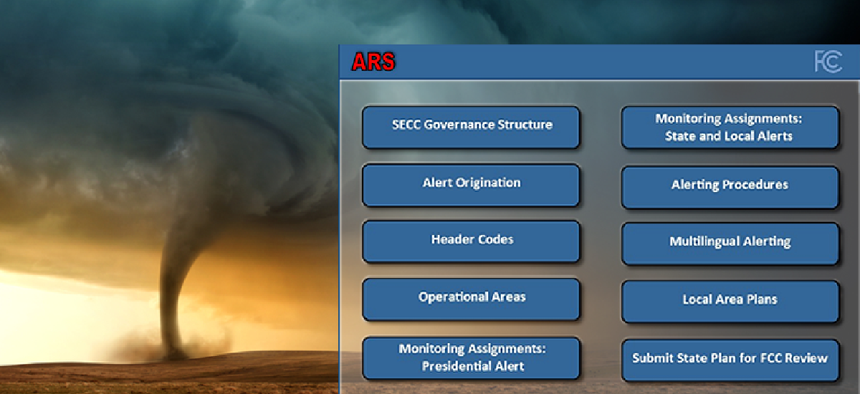FCC plans online filing system for state emergency alert plans

The Alert Reporting System will standardize the format and terminology of state emergency alert system plans, making it easier for states to update their plans and federal officials to detect problems.
To address problems in the nation's Emergency Alert System, the Federal Communications Commission has issued rules to modernize recordkeeping on alerts and reduce recurring filing burdens on State Emergency Communications Committees (SECCs).
Established in 1997 to replace the Emergency Broadcast System, the EAS' primary purpose is to allow the quick and reliable communication of weather and emergency information and a way for the president to speak to the entire nation.
Even before the incident where false emergency alerts were issued in Hawaii, the FCC recognized there were weaknesses in some state emergency alert plans, but detecting and tracking problems was challenging because of paper-based processes. By creating a online Alert Reporting System (ARS) that standardizes the format and terminology of state EAS plan filings, federal officials can "more easily review and identify gaps in the EAS architectures, detect problems, and take measures to address these shortcomings," the FCC order said.
The online filing system will make it easier for the FCC to review alerting architecture because "it will provide an end-to-end picture of the EAS distribution architecture for each state," the order said. Electronic data from state EAS plans that is cross-referenced with information from the EAS Test Reporting System will make it easier to identify single points of failure.
States will benefit from the new ARS because it will streamline the emergency plan filing and approval process and reduce the costs of updating state plans because filers will be able to make changes to their plans in real time, rather than revising, updating, printing and mailing an entirely new plan every time a change is made. The online system will also pre-populate data fields for state EAS plans with information from other FCC databases, making it easier for states to update and revise their plans.
The FCC directed its Public Safety and Homeland Security Bureau to develop and implement the template so that its collection of monitoring data is structured, consistent, secure and minimally burdensome to states.
The online ARS form will capture data on SECC governance structure, alert origination, alert header codes, operational areas, alerting procedures, multilingual capabilities, local-area plans and monitoring assignments for state, local and presidential alerts.
Because the system will house sensitive information, the FCC said it will ensure that only authorized entities access this data. It also said it will share "individual and aggregated data on a confidential basis with other federal agencies and state governmental emergency management agencies that have confidentiality protection at least equal to that provided by the Freedom of Information Act."






